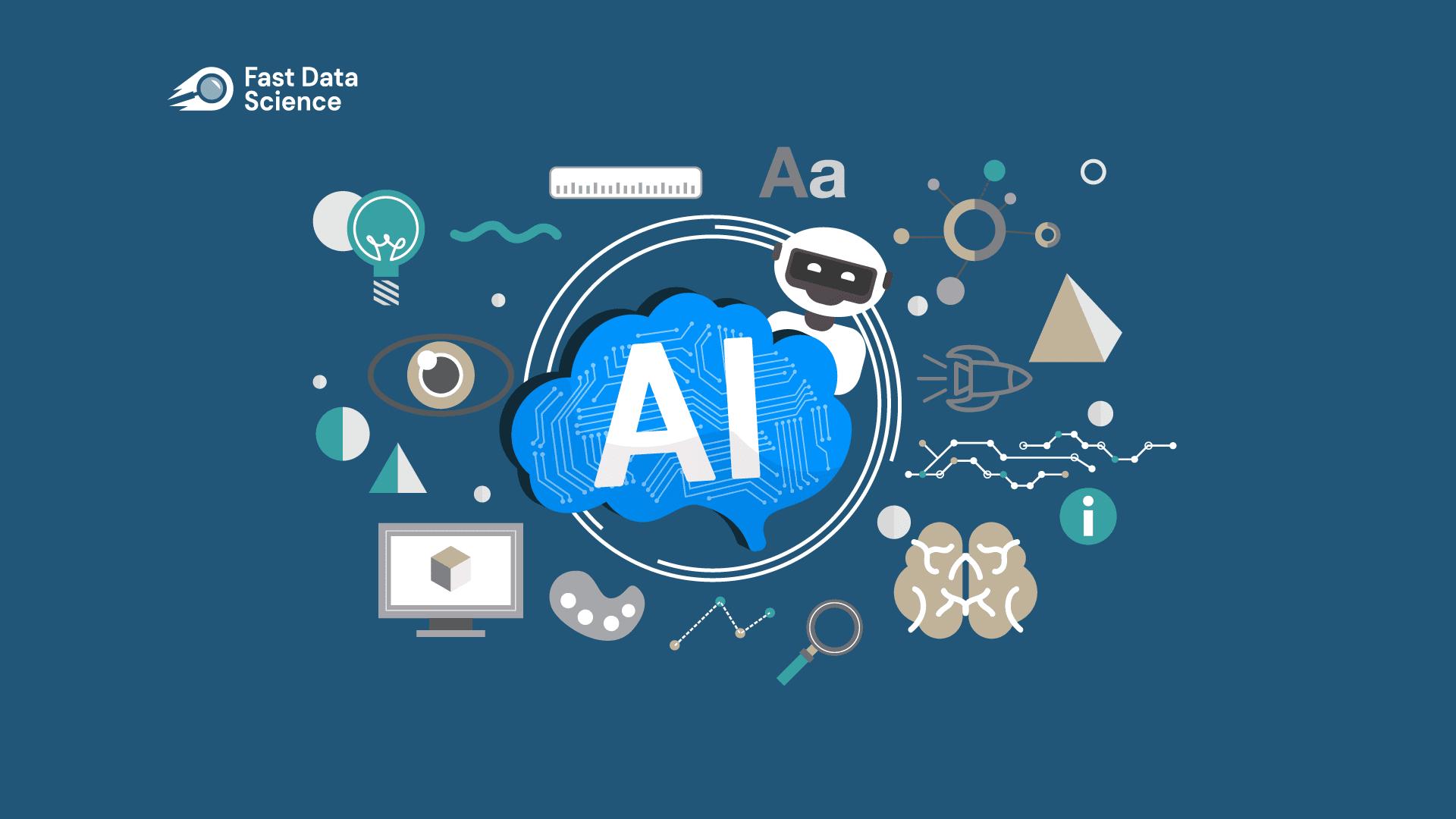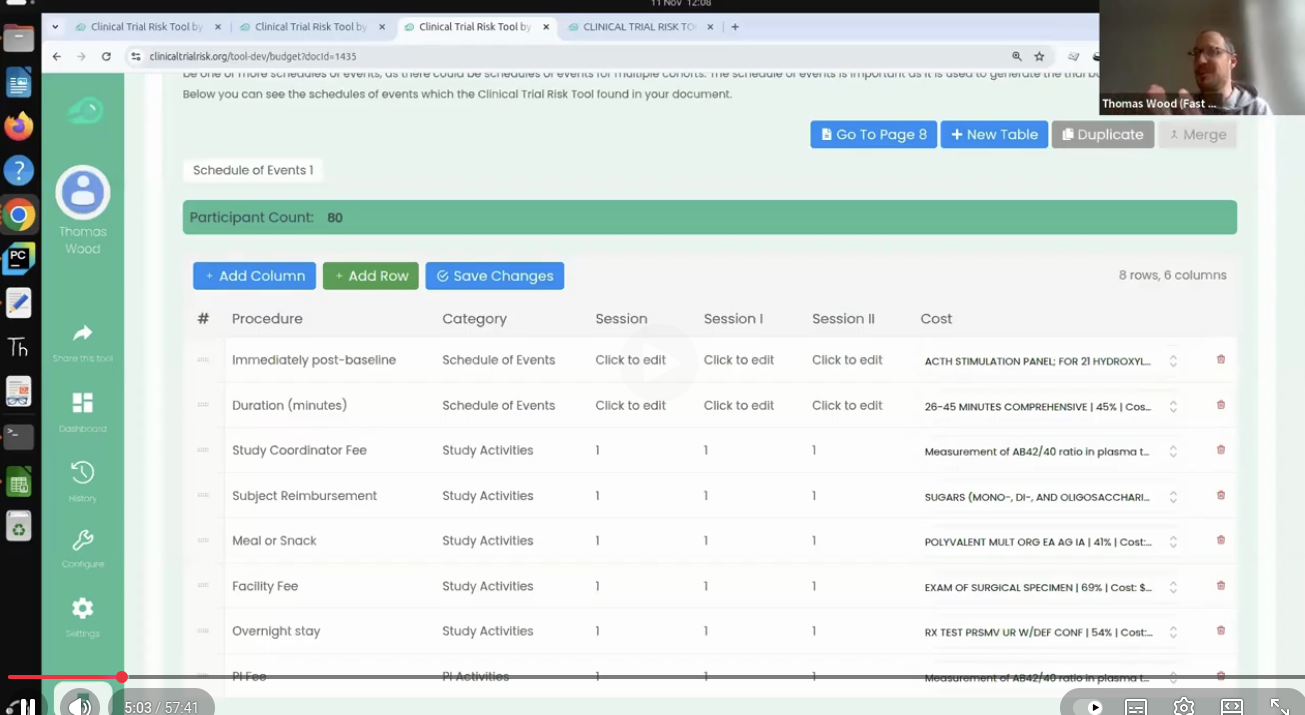
Generative AI, a subset of AI, is fundamentally transforming industries and shaping the future. Leveraging advanced algorithms, generative AI can create content, designs, and solutions that were previously unimaginable. By using machine learning models such as Generative Adversarial Networks (GANs) and Variational Autoencoders (VAEs), generative AI systems can produce new data that mimics the patterns and structures of the training data.
The impact of generative AI is being felt across various sectors. In the creative industries, it is enabling artists and designers to push the boundaries of their work by generating novel pieces of art, music, and literature. In healthcare, generative AI is being used to design new drugs and treatment plans, offering the potential for personalized medicine and innovative therapies. The technology is also revolutionizing fields such as finance, marketing, and manufacturing by optimizing processes, enhancing decision-making, and creating new products.
However, the rise of generative AI also brings several challenges and concerns. Issues related to ethical use, data privacy, and the potential for misuse of AI-generated content are becoming increasingly important. As generative AI continues to evolve, it is crucial to address these concerns to ensure the technology is used responsibly and benefits society as a whole. This article delves into what generative AI is, its use cases, benefits, and the concerns it raises, providing a comprehensive overview of this transformative technology.
Natural language processing
Generative AI refers to artificial intelligence systems capable of creating new content, be it text, images, audio, or even complex data models. Unlike traditional AI, which focuses on recognizing patterns and making decisions based on existing data, generative AI leverages advanced algorithms, such as Generative Adversarial Networks (GANs) and transformers, to generate novel and creative outputs. This ability to produce new and unique content has far-reaching implications across various sectors.
Generative Models: These models are designed to create new data instances that are similar to the training data. Examples include:
Discriminative Models: These models are used to evaluate the authenticity of the generated data. They are crucial in the training process of GANs, where the discriminator’s role is to distinguish between real and generated data, thus improving the quality of the generator’s outputs over time.
Training Data: The foundation of any generative AI system is the dataset it is trained on. Large and diverse datasets are essential for training models to generate high-quality outputs. The quality, variety, and volume of the training data directly impact the effectiveness of the generative model. Common types of training data include:
| Feature | Generative Models | Discriminative Models |
|---|---|---|
| Primary Function | Generate new data instances | Classify data into different categories |
| Examples | GANs, VAEs | SVMs, Random Forests |
| Training Objective | Model the distribution of the data | Find decision boundaries between classes |
| Output | New, synthetic data | Labels for existing data |
Generative AI typically involves the use of neural networks, particularly Generative Adversarial Networks (GANs) and Variational Autoencoders (VAEs). These networks consist of two parts: a generator that creates new data and a discriminator that evaluates its authenticity. Over time, these networks improve their ability to produce high-quality, realistic outputs. This are the steps generally needs to follow for make a generative AI Model:
| Technique | Description | Examples |
|---|---|---|
| GANs | Uses two neural networks to generate content and evaluate its authenticity | Deepfake videos, image synthesis |
| VAEs | Encodes input data into a compressed format and decodes it to generate new data | Image generation, data augmentation |
| Transformers | Utilizes attention mechanisms to generate text or images from input prompts | GPT-3, DALL-E |
Generative Adversarial Networks (GANs):
Variational Autoencoders (VAEs):
Transformer Models:
Generative AI has a broad range of applications across various industries, revolutionizing how tasks are performed and creating new possibilities for innovation.
Generative AI is transforming the media and entertainment industry by automating the creation of text, images, and videos. AI-powered tools can generate news articles, blog posts, marketing content, and even realistic images from textual descriptions. For example, AI can assist journalists by drafting initial news reports, creating content for social media campaigns, or generating product descriptions for e-commerce websites. These tools can also generate video scripts, edit footage, and create animations, streamlining the content production process and enhancing creativity.
In the field of design, generative AI aids in creating innovative and aesthetically pleasing designs. Artists and designers use AI tools to generate artwork, fashion designs, and architectural plans, pushing the boundaries of creativity. For instance, AI can create unique art pieces by learning from existing artworks or assist fashion designers in creating new clothing patterns. In architecture, generative AI can design buildings and interiors that optimize space and aesthetics, incorporating environmental factors and user preferences to produce cutting-edge designs.
In healthcare, generative AI is used to develop new drugs, design personalized treatment plans, and simulate medical scenarios. AI-generated models help researchers understand complex biological processes and predict patient outcomes. For instance, AI can analyze vast amounts of genetic data to identify potential drug candidates or simulate clinical trials to predict the effectiveness of new treatments. Personalized medicine is another area where AI tailors treatment plans based on individual patient data, leading to more effective and targeted therapies.
The gaming industry benefits from generative AI by creating immersive environments, realistic characters, and engaging storylines. AI can generate vast game worlds, dynamic scenarios, and adaptive gameplay, enhancing the player experience. For example, AI can create procedurally generated levels that offer unique challenges each time a game is played or develop non-player characters (NPCs) that interact with players in realistic ways, making games more engaging and replayable.
Educational platforms use generative AI to create personalized learning experiences, generate educational content, and develop interactive simulations. AI tutors can adapt to individual learning styles and provide targeted assistance. For instance, AI can generate practice questions tailored to a student’s progress, create interactive simulations that allow students to explore complex concepts, or offer real-time feedback on assignments, making learning more interactive and effective.
Marketers use generative AI to create personalized advertisements and marketing materials. It helps in crafting compelling messages tailored to specific audience segments. For example, AI can analyze consumer data to generate targeted ads that resonate with specific demographics or create marketing content that adapts to the preferences and behaviors of potential customers. This personalized approach can increase engagement and conversion rates, making marketing campaigns more effective.
In finance, generative AI models can predict market trends, generate investment strategies, and detect fraudulent activities. AI-generated financial reports and analyses provide valuable insights for decision-making. For instance, AI can analyze historical market data to forecast future trends, develop algorithmic trading strategies that automatically execute trades based on real-time data, or detect unusual patterns that may indicate fraudulent transactions, enhancing security and profitability.
| Industry | Use Case | Description |
|---|---|---|
| Content Creation | Automated Writing, Drafting articles, suggesting edits | AI generates articles, reports, and creative content |
| Design and Art | AI-Generated Art, Creating artwork, design layouts | Algorithms create paintings, music, fashion designs, and architectural plans |
| Healthcare | Drug Design, Generating synthetic medical data | AI helps in designing new drugs, personalized treatment plans, and simulating medical scenarios |
| Gaming | Procedural Content Generation | AI creates new game levels, characters, immersive environments, and engaging storylines |
| Education | Personalized Learning Experiences, Generating educational content, Developing interactive simulations | AI creates tailored educational content, interactive simulations, and provides real-time feedback |
| Marketing | Personalized Marketing Content, Personalized advertisements, marketing materials | AI analyzes consumer data to create targeted advertisements and marketing campaigns |
| Finance | Risk assessment, fraud detection, algorithmic trading | AI models predict market trends, generate investment strategies, and detect fraudulent activities |
Generative AI offers numerous benefits that span across various fields and industries, enhancing creativity, efficiency, innovation, cost savings, decision-making, data augmentation, and personalization.
Generative AI augments human creativity by providing new ideas and perspectives. It enables artists, writers, and designers to push the boundaries of their creativity. For instance, AI can suggest new design elements, generate plot ideas for stories, or create unique pieces of art. By learning from vast datasets, generative AI can introduce novel concepts and styles that humans may not have considered, thereby fostering greater innovation in creative fields.
Generative AI automates repetitive tasks, allowing professionals to focus on more strategic and creative aspects of their work. It significantly reduces the time and effort required for content creation and data analysis. For example, in journalism, AI can draft initial news reports based on data, freeing up journalists to investigate and write more in-depth stories. In design, AI tools can quickly generate multiple variations of a layout, enabling designers to select and refine the best options more efficiently.
By generating novel solutions and ideas, generative AI drives innovation across industries. It helps businesses stay competitive by continuously evolving and adapting to new trends. For instance, in the pharmaceutical industry, AI can propose new drug formulations that scientists can then test and refine. In product design, AI can suggest innovative features and improvements that enhance functionality and user experience. This constant influx of new ideas and solutions helps companies lead in their respective markets.
Automation of content creation, design, and analysis processes reduces operational costs. Businesses can achieve significant cost savings by leveraging AI-generated outputs instead of relying solely on manual efforts. For example, in marketing, AI can generate personalized advertisements at scale, reducing the need for extensive human intervention. In manufacturing, AI can optimize production processes, minimizing waste and lowering costs. These efficiencies translate into substantial financial savings for organizations.
Generative AI provides data-driven insights and predictive models that aid in informed decision-making. By analyzing large datasets and generating actionable recommendations, AI enhances the accuracy and effectiveness of business strategies. For example, in finance, AI can analyze market trends and predict stock movements, helping investors make better trading decisions. In healthcare, AI can analyze patient data to predict disease outbreaks or recommend personalized treatment plans, improving patient outcomes.
Generative AI can create synthetic data to augment training datasets. This is particularly useful in scenarios where data is scarce or expensive to obtain. For instance, in medical research, AI can generate synthetic patient data to train models for disease diagnosis, enhancing the robustness of these models. In autonomous driving, AI can simulate various driving conditions to improve the safety and performance of self-driving cars. Data augmentation ensures that AI models are well-trained and capable of handling diverse scenarios.
Generative AI enables personalized experiences by generating content tailored to individual preferences and behaviors. This leads to higher engagement and satisfaction among users. For example, streaming services use AI to recommend movies and shows based on user viewing history, creating a more enjoyable experience. In e-commerce, AI can personalize product recommendations, increasing the likelihood of purchases. Personalized content ensures that users receive relevant and engaging experiences, fostering loyalty and satisfaction.
Despite its potential, generative AI raises several concerns that need to be addressed to ensure its responsible and ethical use.
The ability to create realistic content raises ethical questions about the use of generative AI. There is a significant risk of misuse, such as creating deepfakes or spreading misinformation. Deepfakes, which are highly realistic but fake videos or audio recordings, can be used to impersonate individuals, spread false information, or commit fraud. This poses a threat to privacy, security, and trust in digital media. The challenge lies in balancing the benefits of generative AI with the need to prevent its unethical use.
Generative AI models are trained on vast datasets, often sourced from the internet. This raises concerns about intellectual property (IP) rights and the ownership of generated content. Artists, writers, and other content creators may find their work used to train AI models without their consent or compensation. Furthermore, the ownership of AI-generated content is unclear, raising legal and ethical questions about who holds the rights to such content and how it can be used or monetized.
Generative AI can perpetuate existing biases present in training data. If the training data contains biased information, the AI model is likely to reproduce these biases in its outputs. This can result in unfair treatment of certain groups and reinforce stereotypes. Ensuring fairness and reducing bias in AI-generated content is a significant challenge that requires careful selection and preprocessing of training data, as well as ongoing monitoring and adjustment of AI models to mitigate bias.
Determining accountability for AI-generated content and decisions is complex. If an AI system generates harmful or misleading content, it can be difficult to assign responsibility. Establishing clear guidelines and regulatory frameworks for the responsible use of generative AI is necessary to ensure accountability and transparency. This includes defining who is accountable for the actions of AI systems and establishing mechanisms for recourse in cases of harm or misuse.
Generative AI can be exploited to create malicious content, such as phishing emails, malware, or fake identities. These security risks pose a significant threat to individuals and organizations. For example, AI-generated phishing emails can be highly convincing, increasing the likelihood of successful cyberattacks. Ensuring the security of AI-generated content is crucial to prevent misuse and protect against potential threats.
The automation of creative tasks through generative AI may lead to job displacement in industries heavily reliant on content creation and design. While AI can enhance productivity and creativity, it may also reduce the need for human workers in certain roles. Preparing the workforce for this shift is essential, including providing opportunities for reskilling and upskilling to help individuals transition to new roles that leverage their creativity and expertise in conjunction with AI.
The rapid advancement of generative AI outpaces existing regulations, creating a need for updated policies and guidelines. Current regulatory frameworks may not adequately address the unique challenges posed by AI, such as data privacy, ethical use , and accountability. Developing comprehensive regulations that keep pace with technological advancements is crucial to ensure the responsible development and deployment of generative AI.
| Concern | Description |
|---|---|
| Ethical Issues | Misuse of AI for creating deepfakes or spreading misinformation |
| Intellectual Property | Ownership issues of generated content |
| Bias and Fairness | Perpetuation of biases present in training data |
| Accountability | Difficulty in assigning responsibility for AI-generated content |
| Security Risks | Creation of malicious content, such as phishing emails or malware |
| Job Displacement | Potential loss of jobs in creative industries due to automation |
| Regulatory Challenges | Need for updated policies and guidelines to address the unique challenges of AI |
Generative AI is a powerful tool with the potential to revolutionize various industries. Its ability to generate new content and solutions opens up endless possibilities for innovation and creativity. However, addressing the ethical, legal, and social implications of generative AI is crucial to harness its full potential responsibly. As we continue to explore and develop this technology, it is essential to strike a balance between innovation and ethical considerations to ensure a positive impact on society. The benefits of generative AI, such as enhanced creativity, increased efficiency, and cost savings, are significant, but so are the challenges related to bias, security risks, and job displacement. To harness the power of generative AI responsibly, businesses, policymakers, and society must collaborate to establish clear guidelines and regulations. This includes protecting intellectual property rights, ensuring fairness and accountability, and addressing security risks associated with AI-generated content. As generative AI continues to evolve, its impact on businesses, creativity, and society will undoubtedly expand. Human-AI collaboration will lead to unprecedented possibilities, driving innovation and transforming industries. By proactively addressing the ethical and social implications, we can ensure that generative AI serves as a force for good, enhancing human capabilities and contributing to a better future. In conclusion, the evolution of generative AI presents both opportunities and challenges. The key to unlocking its full potential lies in responsible development and deployment. By fostering a collaborative approach between all stakeholders, we can navigate the complexities of this technology and create a future where generative AI contributes positively to society.
Looking for experts in Natural Language Processing? Post your job openings with us and find your ideal candidate today!
Post a Job
How can you predict customer churn using machine learning and AI? In an earlier blog post, I introduced the concept of customer churn. Here, I’d like to dive into customer churn prediction in more detail and show how we can easily and simply use AI to predict customer churn.

A generative AI-based legal advice tool for small businesses in distress We are pleased to announce the publication of our paper A generative AI-based legal advice tool for small businesses in distress, in collaboration with an interdisciplinary team based in the UK and Hungary.

Thomas Wood presents the Clinical Trial Risk Tool before the November meeting of the Clinical AI Interest Group at Alan Turing Institute The Clinical AI Interest group is a community of health professionals from a broad range of backgrounds with an interest in Clinical AI, organised by the Alan Turing Institute.
What we can do for you